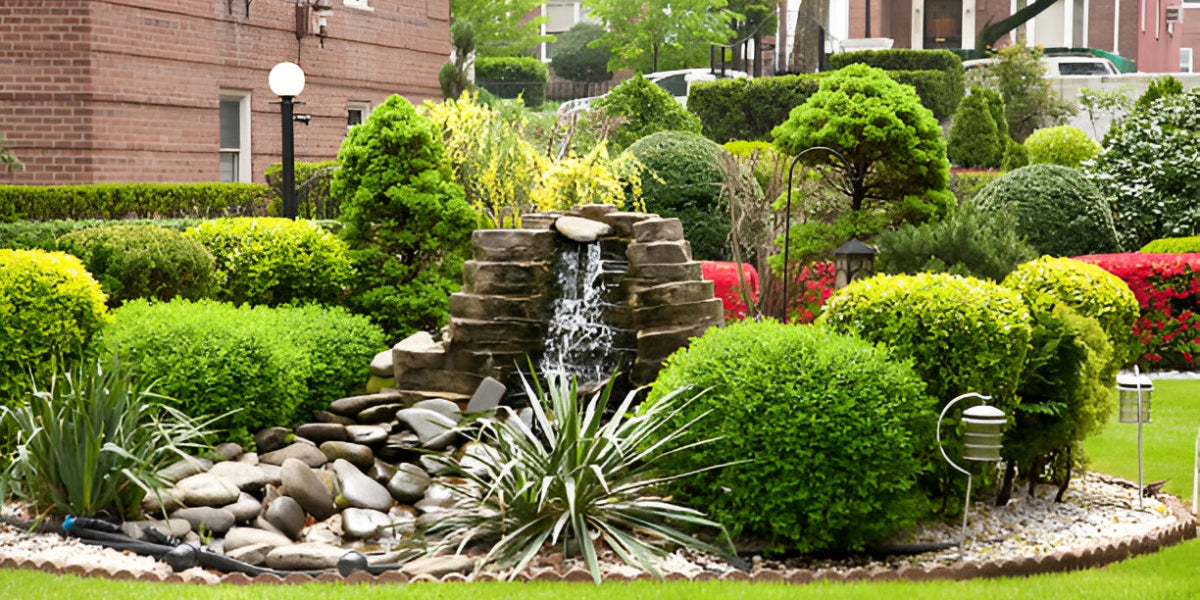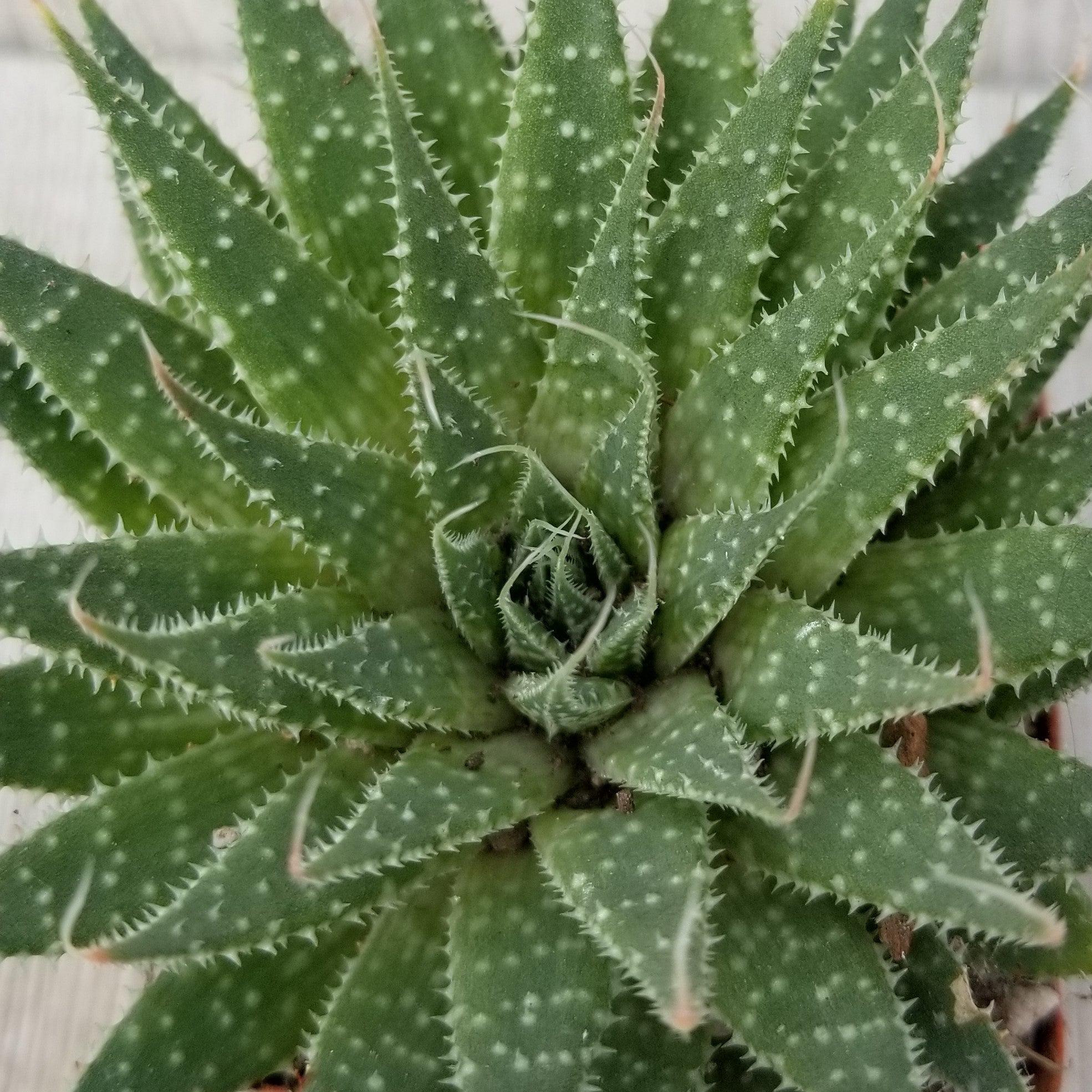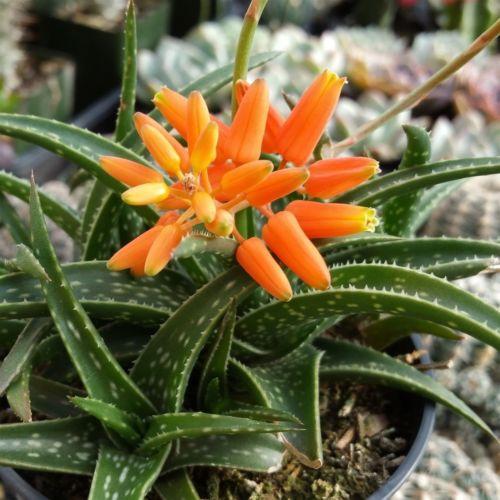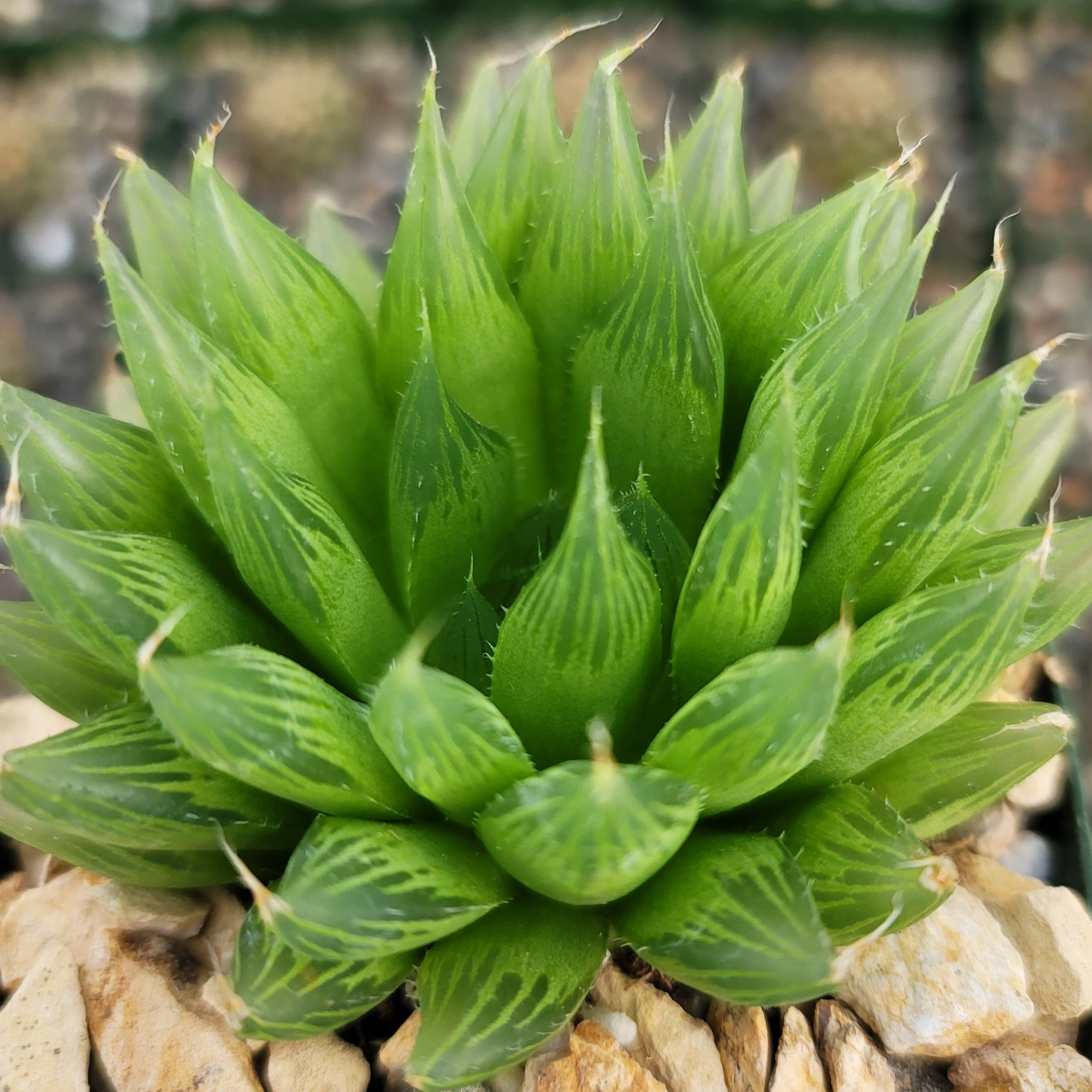How to Water Succulents - Everything You Need To Know!
Updated: August 27, 2025

Succulents are extremely drought-tolerant plants that can survive for long periods without water. In fact, succulents are designed to thrive in conditions with infrequent rainfall, making them perfect for forgetful gardeners or those who tend to underwater. Their ability to store water in their leaves and stems allows them to withstand neglect and survive with minimal moisture, making them incredibly resilient. However, this doesn't mean they don't need water at all!
To properly water succulents, use the "soak and dry" method: thoroughly saturate the soil until water drains from the bottom, then allow the soil to dry completely before watering again.
In fact, proper watering is crucial for succulents to grow and flourish. But how do you know when to water, and how much is too much? With their delicate balance of water storage and drought tolerance, succulents require a thoughtful approach to watering.
In this article, we'll explore the tips and tricks of watering succulents, covering everything from spotting the signs of thirst to avoiding the pitfalls of overwatering.
Key Succulent Watering Highlights
- Check the Soil First – Don't water unless the soil is dry; use the two-finger test to check for moisture.
- Use the Soak and Dry Method – Water deeply until excess drains out, then let the soil dry completely before watering again.
- Avoid Overwatering – Succulents store water in their leaves, so too much moisture can cause root rot.
- Water at the Base – Always water directly at the soil, not on the leaves, to prevent rot and fungal issues.
- Adjust for Seasons – Water more in active growing seasons (spring & fall) and less during dormancy (summer & winter).
How Much Water Do Succulent Needs?
Succulents are like camels—they absorb water quickly and store it in their leaves, stems, and roots, allowing them to go long periods without needing more. Because of this, they thrive best with the soak-and-dry method—water deeply until excess drains out, then wait until the soil is completely dry before watering again. Overwatering is a common mistake, leading to root rot, while underwatering can cause wrinkled or shriveled leaves. Finding the right balance is essential, as succulents need deep but infrequent watering to stay healthy and thrive in dry conditions.
The 2 Best Watering Practices for Thriving Succulent Plants
1. Soak and Dry Method: The "Soak and Dry" method is one of the most effective techniques for watering succulents. This method involves thoroughly soaking the soil until water drains out from the bottom of the pot, then allowing the soil to dry out completely before watering again. Don't water unless the soil is dry—you can check this using the two-finger technique by inserting your fingers about an inch into the soil to feel for moisture. The key to this technique is to mimic the natural rainfall patterns in the succulent's native environment, where they experience periods of heavy rain followed by long dry spells. By letting the soil dry out between waterings, you encourage the plant’s roots to grow deeper, searching for moisture, which leads to a stronger and more resilient root system. This method also prevents the roots from sitting in water, reducing the risk of root rot.

2. Bottom Watering: Bottom watering involves placing the plant pot in a shallow tray of water and allowing the soil to absorb water through the drainage hole at the bottom of the pot.
This method is particularly useful for succulents that are sensitive to wet leaves or stems, as it ensures the roots receive moisture without soaking the upper parts of the plant.
To use this method, fill a tray with water and place the pot in it for about 15-30 minutes or until the soil’s top layer feels moist. Bottom watering is ideal when the soil has become compacted or if you notice the water isn’t penetrating the soil evenly from the top. It also promotes deep root growth by encouraging the roots to reach downward for water.
Misting is not a recommended method for getting water to succulents, as the leaves don't really absorb the water and misting does not hydrate your succulents at all. So when the top 2-3 inches of the soil is dry to touch just water them.
How long can Succulents go without water?
Succulents can survive 1 to 3 months without water, depending on factors such as species, size, and environmental conditions. During the dormant season (fall and winter), succulents can often survive for 2-4 months without water. However, it's always best to water your succulents when the soil feels dry to the touch to ensure they receive the moisture they need to thrive.
The Art of Watering Succulents is Striking a Balance Between Underwatering and Overwatering
Succulents are unique in their ability to store water, but this characteristic can lead to confusion when it comes to finding the right watering balance.
Underwatering Succulent: Signs & Treatments
Underwatering occurs when your succulent plants do not receive enough water over an extended period. Because succulents store water in their leaves, stems, and roots, they can survive on limited moisture, but they still require regular watering to maintain their health. While succulents are drought-tolerant, consistent underwatering can weaken the plant and make it more susceptible to damage or disease.

Wrinkled or shriveled leaves: These are a clear indication of underwatering. When succulents lack water, their leaves lose their plumpness and firm texture, becoming wrinkled and creased. Water your succulent thoroughly, making sure the soil is moist but not waterlogged. Increase the frequency of watering, but ensure the soil has a chance to dry out slightly between waterings.

Limp or Squishy Leaves: These are a sign of severe underwatering. When leaves become soft and limp, they are prone to rot and damage. Water your succulent immediately, and consider repotting it in fresh, well-draining soil. Reduce the frequency of watering, but ensure the soil remains moist.

Slow Growth or No Growth: It is a sign that your succulent is not receiving enough water. Underwatered succulents conserve energy and resources, leading to stunted growth. Increase the frequency of watering, and ensure the soil is consistently moist. Provide your succulent with bright, indirect light and maintain optimal temperatures to promote healthy growth.

Leaves Develop Brown Tips or Edges: Brown tips or edges on leaves indicate dehydration and stress. When succulents lack water, their leaves develop brown, crispy edges. Trim off the brown tips or edges to prevent further damage. Water your succulent thoroughly, and adjust the frequency of watering to prevent future underwatering.

Soil Feels Extremely Dry: When the soil feels extremely dry, it's a clear sign that your succulent needs water. Water your succulent thoroughly, making sure the soil is moist but not waterlogged. Check the soil regularly to ensure it doesn't become too dry or waterlogged.
Overwatering Succulent: Signs & Treatments
Overwatering occurs when these plants receive too much water, either from excessive watering frequency or inadequate drainage. Unlike typical houseplants, succulents are adapted to store water in their leaves, stems, and roots, which means they need less frequent watering. When overwatered, the soil remains consistently moist, preventing the roots from drying out properly.
Black or Brown Spots: These dark spots on leaves or stems are usually caused by fungal diseases triggered by excess moisture. When succulents are overwatered, stagnant water encourages fungal growth, leading to spotting. Remove the affected leaves or stems, treat with a fungicide, and reduce watering frequency. Ensuring proper airflow around the plant also helps prevent further fungal spread.

Waterlogged Soil: It is a clear indication of overwatering. When the soil is consistently waterlogged, roots rot, and succulents become susceptible to disease. Stop watering immediately, and repot the succulent in fresh, well-draining soil. Ensure good air circulation to prevent further moisture buildup.

Soft, Mushy Stems: Succulents with overly saturated tissues begin to collapse under the weight of excess water. When stems turn soft and mushy, it’s often too late for the affected parts. Cut away damaged growth with sterilized scissors, repot into dry, gritty soil, and water sparingly moving forward. Mushy stems are one of the last warning signs before the plant dies from rot.

Yellowing or Droopy Leaves: When leaves begin to yellow or sag, it usually means the roots are drowning. Unlike underwatered plants, which have shriveled leaves, overwatered succulents retain too much moisture and eventually rot. Remove the yellow or drooping leaves, check the roots for signs of damage, and adjust watering to the soak-and-dry method.

Root Rot: This is the most serious consequence of overwatering and the leading cause of succulent death. Rotten roots turn black, slimy, and emit a foul odor. Once rot sets in, the plant struggles to absorb water and nutrients, leaving it vulnerable to pests and further disease. To save the plant, trim away all rotten roots, let healthy roots dry for a day or two, and replant in dry, well-draining soil. Reducing watering frequency and ensuring adequate air circulation are the best ways to prevent recurrence.
By understanding this balance, you can ensure your succulents receive just the right amount of moisture.
Detailed Succulent Plant Watering Requirements
Always check to see if the soil is completely dry, but the general rule is to wait until the soil is dry before watering. When it comes to watering your succulent plants, they need a balance of moisture and dryness, making watering a delicate task. With their unique ability to store water, succulents have distinct needs that set them apart from other plants. Understanding their watering requirements is crucial for their survival and success.
1. How Often to Water Succulents - Based on Location
The watering schedule for succulents depends largely on their location, as environmental factors such as temperature, humidity, and light exposure play significant roles in determining their water needs. Whether succulents are grown indoors or outdoors, the goal is to replicate the natural conditions they are adapted to, which typically involve infrequent but deep watering followed by periods of dryness.
Indoor Growing Succulent Watering Needs
-
Watering Frequency: When growing succulents indoors, it is crucial to understand their specific watering needs. Indoor plants generally require less frequent watering than those grown outdoors due to the stable, controlled environment. Indoor spaces typically have lower light levels and less airflow, which means the soil takes longer to dry out.
A good rule of thumb is to water succulent plants only when the top 2 inches of soil is dry; which is usually every 2 to 4 weeks. During winter, when indoor succulents may enter a dormant phase, reduce watering even further. -
Consider the Environment: Factors like the type of pot, humidity levels, and indoor heating can affect how often your indoor succulents need water.
Pots without drainage holes or made from materials like plastic can retain moisture longer, so be mindful of overwatering.

Additionally, in drier indoor environments, such as those with central heating, succulents may need slightly more frequent watering.
Pro Tip
For best results, choose a clay or terracotta pot with a drainage hole. Unlike plastic or ceramic, clay pots absorb excess moisture, helping the soil dry out more evenly and reducing the risk of overwatering.
Outdoor Growing Succulent Watering Needs
- Watering Frequency: Outdoor succulents are exposed to varying light, temperature, and airflow conditions, which can cause the soil to dry out more quickly than indoor environments. Outdoor succulents typically need watering every 1 to 2 weeks during the growing season, but always ensure the soil is completely dry before watering again. However, this can vary based on the specific climate of your location. Outdoor plants generally require more frequent watering due to varying environmental conditions. During periods of intense heat, you may need to water more frequently, but always ensure the soil is dry before rewatering.
- Consider the Weather: Weather plays a crucial role in succulent watering. In hot, dry climates, succulents may require more frequent watering, while in cooler or more humid regions, they may need less. Additionally, during rainy seasons, outdoor plants might not need any supplemental watering at all. Be cautious of overwatering if your area experiences heavy rainfall, as this can lead to waterlogged soil and root rot.

2. When to Water Succulents - Based on Seasons
Spring
- As the weather warms up and days get longer, increase watering to promote new growth and development.
- Water when the soil feels dry to the touch, usually every 7-10 days.
Summer
- Water deeply when the soil is dry, usually every 7-10 days, but adjust based on temperature and humidity.
- In extreme heat, the top layer may dry quickly, but ensure the deeper soil has dried before watering again.
Fall
- Gradually reduce watering as the weather cools down and days get shorter.
- Water only when the soil feels dry to the touch, usually every 4-6 weeks.
Winter
- Water sparingly, as succulents require less moisture during the dormant season.
- Water only when the soil feels extremely dry, usually every 4-6 weeks or even less often.
Tap Water vs. Filtered Water: What's Best for Succulents?
Water quality plays an essential role in the health of your succulents. While succulents can be relatively hardy, the type of water you use can impact their growth, appearance, and overall well-being.
Tap water is generally safe for most succulents, filtered water offers a cleaner alternative that can help prevent potential issues caused by mineral buildup and chemicals. If you notice white spots or deposits on your succulents, or if you are growing particularly delicate varieties, switching to filtered water might be worth considering. Alternatively, you can also use rainwater to give your succulent plant the best care possible. Rainwater is ideal for plants because it contains healthy minerals and is safe to drink due to impurities being removed.
Use Fast-Draining Soil to Prevent Overwatering
The type of soil plays a crucial role in succulent care, as succulents do not tolerate heavy, water-retaining soils. Well-draining soil prevents water from sitting around the roots, reducing the risk of rot. In contrast, soils that hold excess moisture may require less frequent watering, but this is not beneficial—it can suffocate roots and lead to waterlogged conditions.
Soil structure and composition also affect watering needs. Compacted soils with fine particles restrict drainage and airflow, increasing the likelihood of root rot. Instead, a loose, well-aerated mix allows for proper drainage and encourages healthy root growth.
Instead, make or buy a well-draining potting mix, or ideally use our specialized potting mix that contains 5 natural substrates and mycorrhizae to promote the development of a strong root system that helps your succulent to thrive.
The Importance of Proper Watering for Succulents

- Prevents Overwatering: The adequate watering helps prevent overwatering, which can lead to root rot, fungal infections, and even death. Outdoor plants generally require more water than indoor plants, and this is especially true for succulents.
- Supports Physiological Processes: Watering succulent plants correctly allows them to absorb the right amount of moisture to carry out their physiological processes, such as photosynthesis, growth, and reproduction.
- Maintains Structural Integrity: Proper watering helps maintain the structural integrity of succulents, keeping their leaves and stems firm and plump, and preventing them from becoming shriveled and weak.
- Reduces Stress: The balanced watering reduces stress on succulents, making them less susceptible to pests and diseases. This also helps the plants thrive and maintain their vibrant colors.
- Promotes Healthy Growth: Proper watering promotes healthy growth, ensuring succulents thrive and maintain their shape, color, and texture.
- Essential for Survival: It is essential for the survival of succulents, and neglecting this aspect of care can lead to serious consequences.
Final Thoughts
Overall, watering succulents is an art that requires patience, observation, and a gentle touch. You should be peculiar about your succulent's watering cycles so they can survive happily indoors and outdoors. When the soil becomes dry, it is the best to water your plants. By understanding the unique needs of these drought-tolerant plants, you can provide them with the perfect balance of moisture and dryness. Remember, it's not about frequent watering, but about thoughtful and intentional hydration. With the right approach, your succulents will thrive, and you'll be rewarded with their stunning shapes, vibrant colors, and low-maintenance charm.
Frequently Asked Questions
-
How much do you water a succulent plant?
Watering succulents requires a delicate balance. Water your succulents when the soil is dry to the touch, usually every 7-10 days in the spring and summer months when they're actively growing. In the fall and winter months when they're dormant, you can reduce watering to every 4-6 weeks. The amount of water depends on the size of the pot, but a general rule of thumb is to water small pots (less than 4 inches) with 1-2 tablespoons, medium pots (4-8 inches) with 1/4 to 1/2 cup, and large pots (over 8 inches) with 1/2 to 1 cup. Remember to water at the base of the plant, avoiding the leaves to prevent rot, and use room-temperature water to prevent shocking the roots.
-
How much water should I give my succulent indoors?
When watering your succulent indoors, provide just the right amount of water to thrive. Water small pots (less than 4 inches in diameter) with 1-2 ounces (30-60 ml) of water, medium pots (4-8 inches) with 2-4 ounces (60-120 ml), and large pots (over 8 inches) with 4-6 ounces (120-180 ml). Water only when the soil is dry to the touch, usually every 7-10 days in spring and summer, and reduce to every 4-6 weeks in fall and winter. Remember to water at the base of the plant, avoiding the leaves to prevent rot, and adjust this guideline based on your environment and the specific needs of your succulent.
-
How much water do you give a succulent outdoors?
When watering your succulent outdoors, consider the increased sunlight and airflow, and adjust your watering schedule accordingly. Water small pots (less than 4 inches in diameter) with 2-4 ounces (60-120 ml) of water, medium pots (4-8 inches) with 4-6 ounces (120-180 ml), and large pots (over 8 inches) with 6-8 ounces (180-240 ml). Water every 5-7 days during hot summer months, and reduce to every 7-10 days during milder spring and fall months, taking into account any rainfall. Be mindful of the leaves and avoid getting water on them to prevent rot and fungal diseases, and adjust this guideline based on your specific climate and the needs of your succulent.
-
How much water do succulents need per week?
Succulents need a surprisingly small amount of water per week, especially considering their hardy and resilient nature. As a general rule, succulents require about 1-2 cups (250-500 ml) of water per week, depending on the size of the pot, climate, and time of year. For small pots (less than 4 inches), aim for 1/2 to 1 cup (125-250 ml) per week, while medium pots (4-8 inches) need about 1-1.5 cups (250-375 ml) per week, and large pots (over 8 inches) require 1.5-2 cups (375-500 ml) per week. Remember, it's better to err on the side of caution and underwater slightly, as succulents can always recover from a dry spell but may rot if waterlogged.
-
Should you water succulents from the top or bottom?
Watering succulents from top to bottom can be beneficial for flushing out salts and minerals, but it's not always the best approach. This method can cause water to collect in the leaves, leading to rot and fungal diseases, and can also wash away tiny roots and soil particles, potentially damaging the plant. Instead, consider watering from the bottom up by placing the pot in a saucer or tray filled with water, allowing the soil to absorb water through the drainage holes, and removing excess water after 10-15 minutes. This method reduces the risk of overwatering and helps prevent root rot. If you do water from the top, use a gentle stream of water, avoid getting water on the leaves or crown, and water sparingly, as succulents prefer dry soil between waterings.
-
What is the best way to water a succulent?
The best way to water a succulent is to "soak and dry", which means thoroughly watering the soil until it's fully saturated, then allowing it to dry out completely between waterings. This approach mimics natural rainfall patterns and helps prevent overwatering, the most common cause of death in succulents. Water in the morning, using room-temperature water, and avoid getting any on the leaves or crown to prevent rot. Use a well-draining potting mix to prevent waterlogged soil. By soaking and drying your succulent, you'll be giving it the best chance to thrive, with watering frequencies ranging from 1-2 weeks in spring/summer to 4-6 weeks in fall/winter.
























